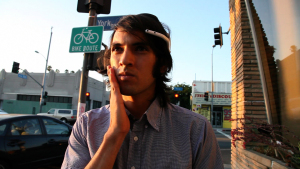
Earlier this month I had the opportunity to interview Christian Zlolniski about his ongoing work in Baja California, Mexico. I contacted Zlolniski in hopes of getting some more insight about the farmworker strikes in the San Quintin Valley that began this past March. Zlolniski is Associate Professor of Anthropology and Director of the Center for Mexican American Studies (CMAS) at the University of Texas at Arlington. His research focuses on economic globalization and immigrant labor, with regional emphasis in the US Southwest and Mexico. He is the author of the book Janitors, Street Vendors, and Activists: The Lives of Mexican Immigrants in Silicon Valley (UC Press, 2006) and co-author of De Jornaleros a Colonos: Residencia, Trabajo e Identidad en el Valle de San Quintín (COLEF, Mexico 2014).
Ryan Anderson: When did you first start doing fieldwork in San Quintin? Why San Quintin?
Christian Zlolniski: I began doing fieldwork in 2005 with two professors at El Colegio de la Frontera Norte (Colef) in Tijuana, Mexico –Laura Velasco a sociologist, and Marie Laure Coubes a demographer. We wanted to study the settlement of thousands of indigenous farmworkers in the region who in the past were seasonal migratory workers. It was evident to us that San Quintin was changing fast and becoming a major agro-export enclave in Northern Mexico. It combined advanced agricultural production technologies with the massive employment of indigenous workers as a source of cheap and flexible labor. Except for a few pioneering studies, the academic literature on this region was rather thin and San Quintin was not in the radar screen of politicians, the media or scholars. We also felt that the academic literature on border studies in Mexico had an urban bias with special focus on the economic, demographic and cultural changes in large border cities (and studies on the maquila industry) while important transformations in rural society and economy, including the rapid growth of export agriculture, were largely ignored. Continue reading
